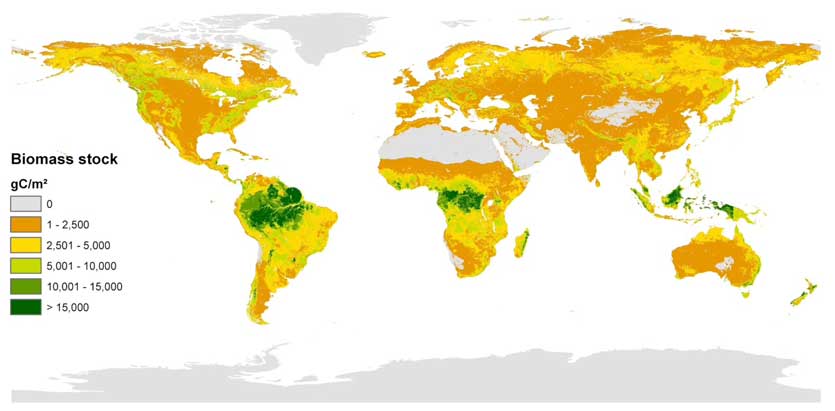Rather obviously our planet contains rather a lot of vegetation. What is also understood to some degree is that this vegetation does influence our climate (Hint: plants absorb CO2). What is perhaps not so well appreciated is that humans have had a rather profound influence upon the currently existing quantity biomass. Well yes, we all know about deforestation, but apparently that turns out to be only half the story.
The degree of our influence has been revealed by a new study that has just been published in Nature, and what it tells us is a surprise.
The Study
The title of the study reveals all in one line …
Unexpectedly large impact of forest management and grazing on global vegetation biomass
(Side note: the paper is behind a paywall at the above link)
What we learn from this is a very valuable insight into the degree that we as a species are profoundly influencing our planet and its climate.
So what exactly does the study reveal?
Basically this …
- The currently existing vegetation on the planet today currently stores around 450 petagrams of carbon
- If we did not use the land, then the potential vegetation would store around 916 petagrams of carbon, under current climate conditions
The difference between those two numbers highlight the massive impact that our species has had.
The paper’s abstract spells it out like this …
This difference highlights the massive effect of land use on biomass stocks. Deforestation and other land-cover changes are responsible for 53–58% of the difference between current and potential biomass stocks. Land management effects (the biomass stock changes induced by land use within the same land cover) contribute 42–47%, but have been underestimated in the literature. Therefore, avoiding deforestation is necessary but not sufficient for mitigation of climate change. Our results imply that trade-offs exist between conserving carbon stocks on managed land and raising the contribution of biomass to raw material and energy supply for the mitigation of climate change. Efforts to raise biomass stocks are currently verifiable only in temperate forests, where their potential is limited. By contrast, large uncertainties hinder verification in the tropical forest, where the largest potential is located, pointing to challenges for the upcoming stocktaking exercises under the Paris agreement.
Author Quotes
Karl-Heinz Erb, the lead study author and a researcher with the Institute of Social Ecology in Austria, has commented on this as follows …
“We have forgotten half of the story up to now,”
“Half of this effect, half of this halving, is already well described, This is the deforestation signal. But the other half, in most studies, is completely missing.”
He goes on to then talk about the impact of these other activities such as large-scale grazing and the management of existing forests …
“This effect is quite massive, more massive than we expected actually,”
“Our finding is in line with the statement that the impact of humans on the climate was quite considerable also before the industrial times,”
Bioenergy with Carbon Capture and Storage (BECCS) might be a problem
A potential strategy some have suggested is to burn biomass for energy and then capture the carbon and bury it. This study suggests that this might not scale up into a solution. As the study author puts it …
“I’m a little bit skeptical that, with the carbon footprint of BECCS, it will ever be a large-scale technology that will save the climate.”
However, the key point from the end of the paper is this …
Our analysis suggests that land-use impacts were pronounced already in the pre-industrial period and reveals that effects of forest management and grazing on vegetation biomass are comparable in magnitude to the effects of deforestation. Therefore, a focus on biomass stocks helps to recognize options for land-based greenhouse gas mitigation beyond the mere conservation of forest area
All in all an interesting paper that pushes the boundary of our understanding a little bit further.
